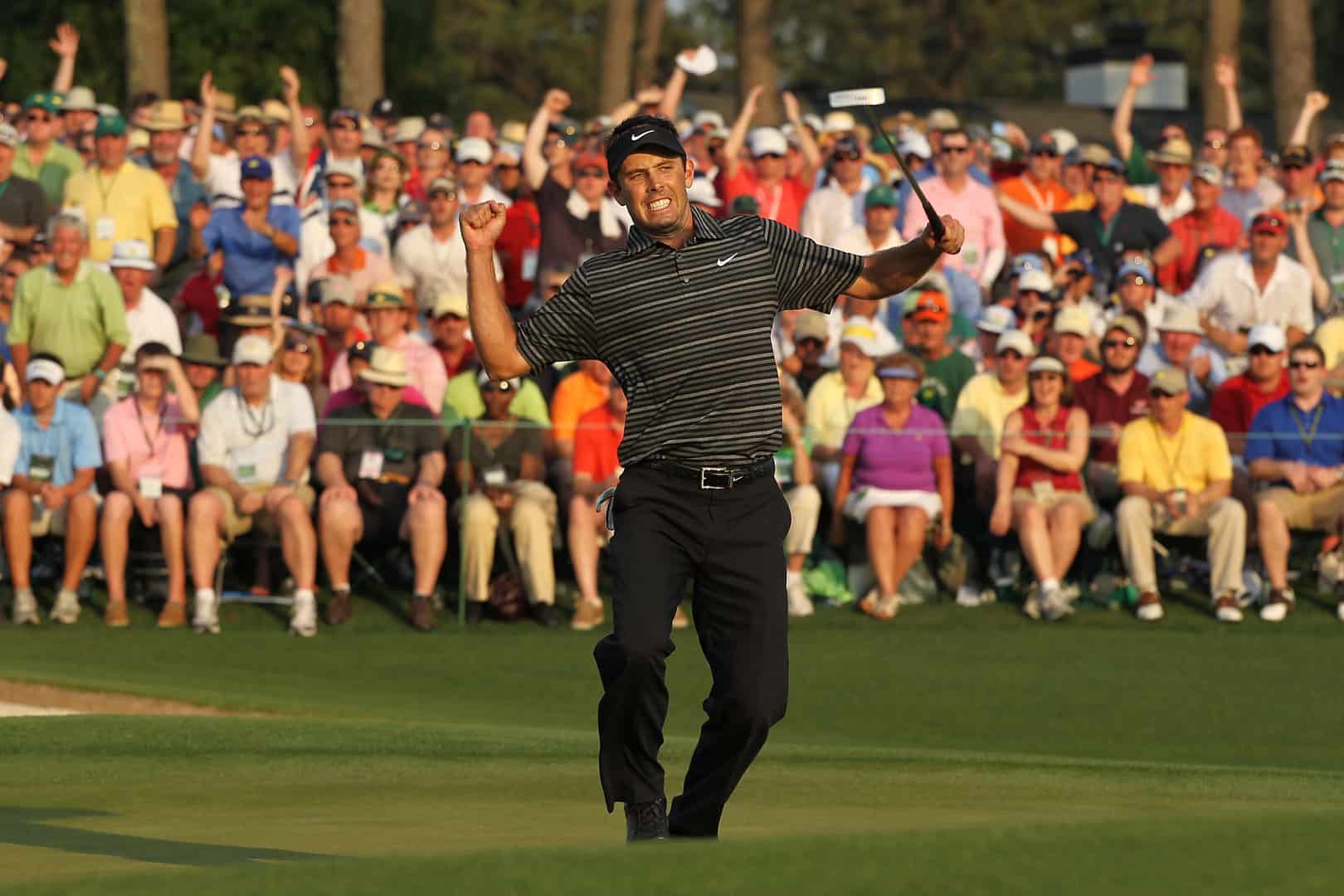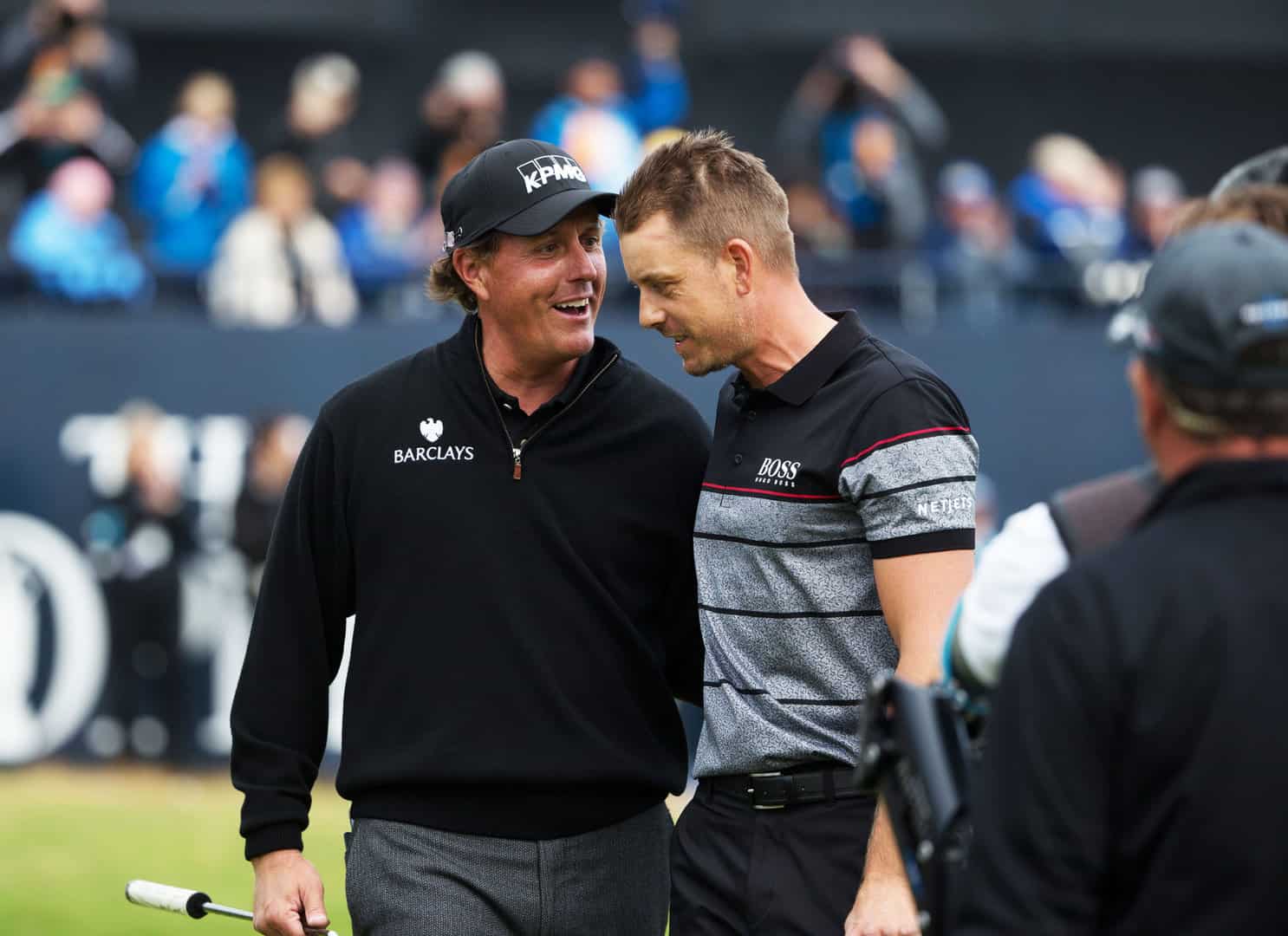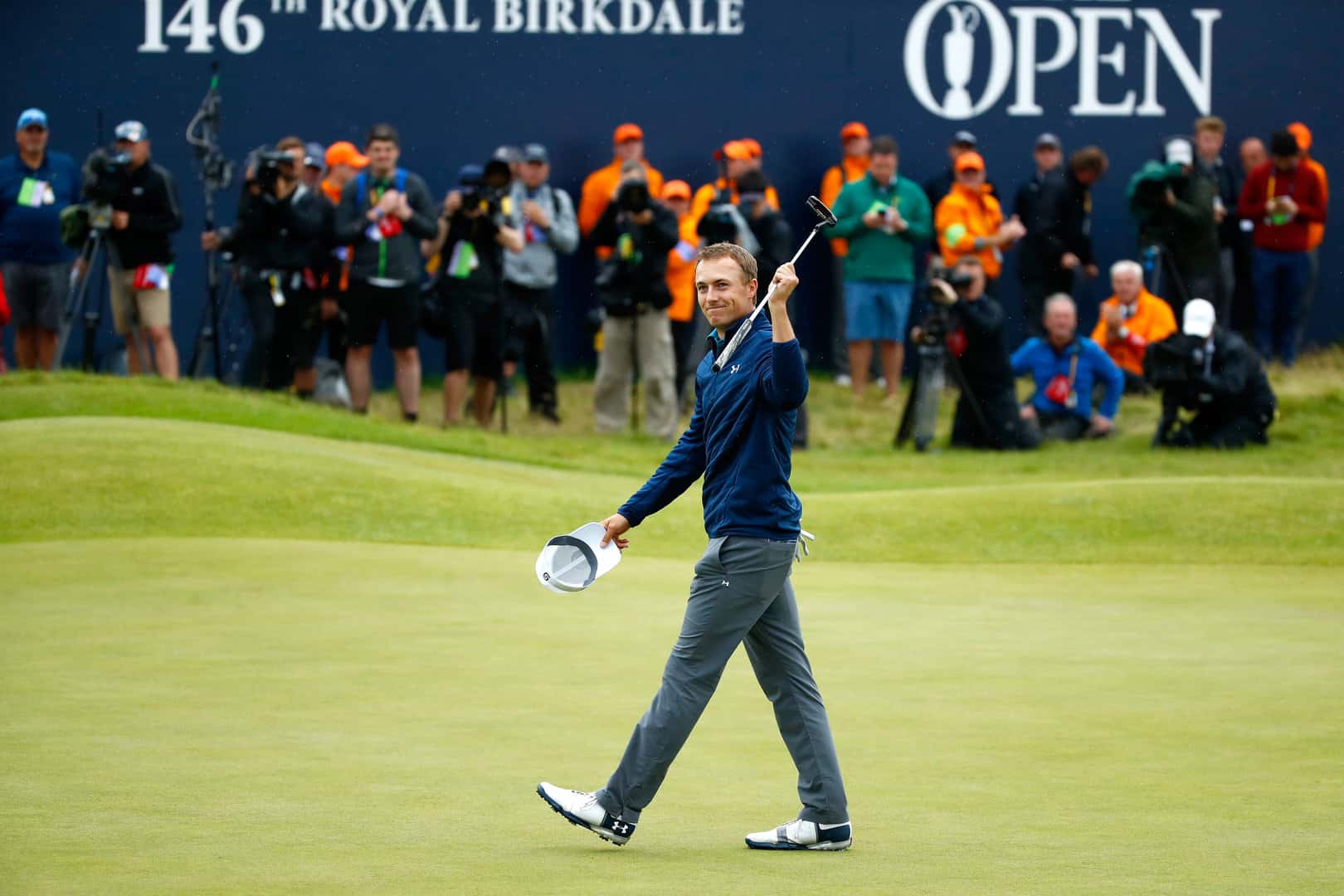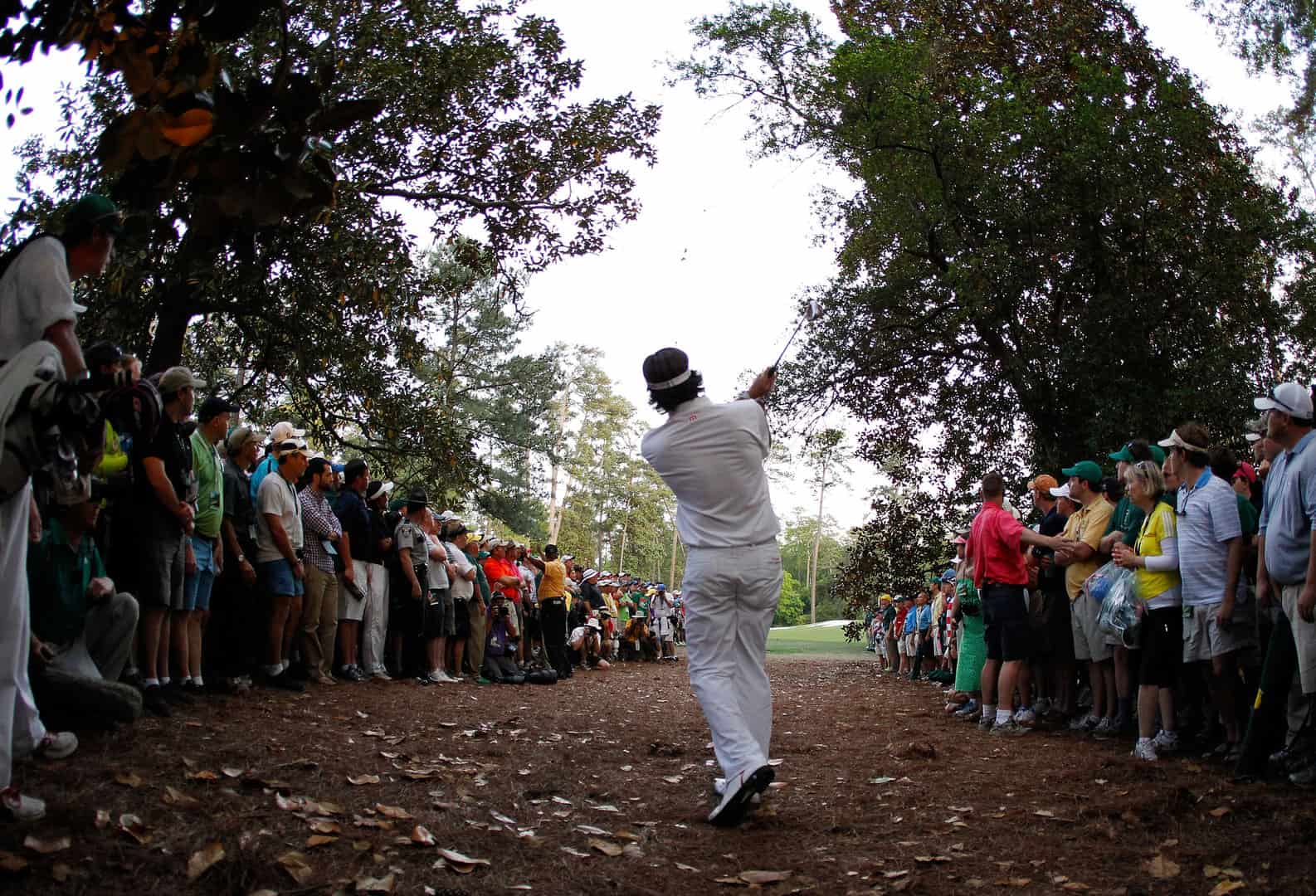Thorbjørn Olesen produced one of the most dramatic climaxes to a golf tournament at last month’s British Masters with a stunning eagle-birdie finish to return to the winner’s circle for the first time in four years.
The 32-year-old Dane entered the final round at The Belfry with a three-stroke lead but that soon disappeared after a two over par front nine, before another pair of bogeys at the 14th and 15th left the prospects of a first title for four years unlikely.
However, Olesen holed a 28-foot eagle putt on the par five 17th hole to draw level with Sebastian Soderberg, who had earlier set the clubhouse target at nine under par, before going one better on the 18th as he converted a 35-foot birdie putt in front of a packed grandstand to seal victory and send the 15,000-strong English crowd into raptures.
To celebrate the monumental ending, we’ve picked our favourite greatest finishes in golf since the turn of the millennium.

Charl Schwartzel realised his dream of winning a Major Championship in 2011 after producing one of the most memorable conclusions in recent memory over the hallowed turf of Augusta National.
The South African, who at the time was ranked 29th in the world, was making only his second appearance at The Masters having finished 30th on his debut outing in 2010. But the Johannesburg-born player looked as comfortable as a seasoned veteran as he started the final day tied second alongside three players on eight under, four strokes off Rory McIlroy’s overnight lead.
McIlroy looked destined to seal his first Major title having led for all three rounds but a back nine meltdown led to a closing eight-over-par 80 which threw the tournament wide open. Schwartzel grabbed the bull by the horns and shot an electric 66, which included a birdie blitz on the last four holes, to seal a two-stroke triumph over Australian duo Jason Day and Adam Scott.
“Rory got off to a poor start but I got off to a great start – and so did Tiger,” Schwartzel told us. “But by the time we were a couple of hours into the final round there was a group of players within two or three shots who all could have won the tournament. And to have that finish, with that electrifying feeling of making all those birdies with the crowds going wild, all over the golf course – I get goosebumps now talking about it.”

Compared to the classic ‘Duel in the Sun’ between Tom Watson and Jack Nicklaus almost 40 years before it, Henrik Stenson and Phil Mickelson produced one of the greatest final day battles in golf history at the 2016 Open Championship.
Stenson began the day a shot ahead on -12, only to lose the lead by the end of the first hole, as he bogeyed and Mickelson birdied. Stenson responded with five birdies in his next seven holes to edge one clear of Mickelson who managed one birdie and eagle.
The pair would be level again after Stenson bogeyed the 11th but the Iceman pulled two ahead for the first time after successive birdies on 14 and 15, the latter a monster 45-foot putt across the green. A third successive birdie on the 16th was matched by Mickelson and the American then rolled in a par-saving putt on the 17th to stay two adrift going down the last.
But Stenson picked up a fourth shot in his closing five holes to sign for a stunning 63 and a three-stroke victory over Mickelson, who posted a highly impressive 65. The Swede’s -20 total matched Jason Day’s record which he had set at the previous year’s PGA Championship while his 63 beat two-time Open champion Greg Norman’s 64 at Royal St George’s in 1993 as the lowest final round by a champion.
“When you’re fighting as hard as I have done out there today and against Phil for a number of days now, it’s just relief when you’re coming off the 18th and you know it’s done,” said Stenson after the round.
“It was great, in a small way it makes it easier because you know he is not going to back away, I know I need to play at my very best and I’m just so happy I managed to do that and get over the finish line.”
Mickelson added: “I’m happy with the way I played, but disappointed it wasn’t enough. I played a bogey-free round and shot 65 in the final round of a Major, usually that’s good enough to do it. And I got beat.”

Another thrilling finish from the Open Championship saw Jordan Spieth and Matt Kuchar lock horns in an enthralling back nine battle at Royal Birkdale in 2017.
Spieth blew a three-shot overnight lead by the turn and trailed Kuchar after dropping a shot with a wild drive on the 13th. Although he surrendered the lead, Spieth’s recovery from the driving range to the right of the 13th was one of the greatest bogeys ever made and seemed to be the catalyst for his third Major victory, the American having already won the Masters and U.S. Open in 2015. Spieth’s blocked drive was 120 yards right of the fairway and went into the deep rough. After long discussions and debate with R&A rules officials, he eventually took a penalty drop and played a 3-iron from the driving range, more than 20 minutes after he struck his drive. The incredible shot landed just short of the green on the extremely difficult par-4, before Spieth got up and down in two for the most important bogey of his career.
Many would have fallen apart following the drama but Spieth switched into a different gear to wrestle back the lead with a run of birdie, eagle, birdie, birdie, par to finish on -12 and finish with the three-shot advantage he had begun the final day with…and, of course, the coveted claret jug.
“This is absolutely a dream come true,” said Spieth at the time. “I drank some wine from the claret jug when Zach Johnson won it two years ago and people said that was bad luck. I started to believe them too after nine holes today.”

One of the greatest shots in the history of the game? Everybody remembers Bubba’s brilliance at the 2012 Masters with the American picking up his first Major Championship trophy courtesy of a moment of magic on the second play-off hole at Augusta National.
Following four consecutive birdies starting at the 13th hole during an eventful final day, Bubba finished regulation with a 68 and tied for the lead with Louis Oosthuizen at -10. The duo traded pars on the first extra hole at the 18th before making their way to the downhill 10th hole. That’s where it all looked to have gone wrong for Bubba after he pulled a mammoth drive into the trees right of the par-4. With little debate with his caddie and no view of the green, Watson pulled off an extravagant hook to within 15 feet of the cup. Two putts later and Bubba Watson was the 2012 Masters champion. It was a shot for the ages and one arguably only Bubba could have produced.
“The first time I ever worked with my caddie, Boston, six years ago, I told him, ‘if I have a swing, I’ve got a shot’,” said Watson. “So, I’m used to the woods. I’m used to the rough. We were walking down and I said, ‘we were here already. We hit it close here already today’, because I was in those trees. I got there. I saw it was a perfect draw, a perfect hook.”
Not many people remember the brilliant birdie blitz to force his way into a play-off, but nobody will ever forget that miraculous hook from the woods.